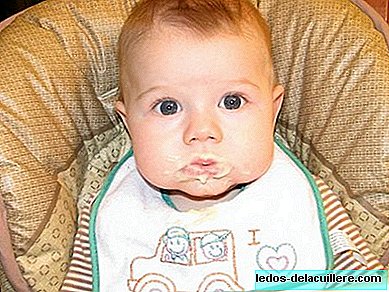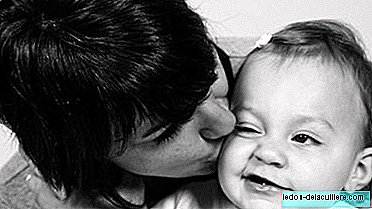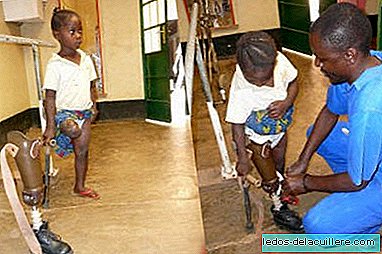
When introducing complementary feeding in the diet of a baby, we usually resort to purees or porridge. Baby's first scoops are an important moment both for parents who usually immortalize the moment and for the little one who discovers a new way of eating.
Whether the baby is being breastfed until that moment or if he has taken a bottle, he has to discover a new gadget that will provide him with food, the spoon. And the way they were used to eating is new. Each baby can act differently by inventing his own way of accepting the spoon, always with the logical curiosity to look, touch and put that new object in his mouth.
What spoon do we use?
Therefore it is a good idea to leave the spoon within reach, to familiarize yourself with it and the dish. The best thing for this is to use a silicone spoon with which they cannot be hurt by manipulating it and biting it.
At the same time, a silicone spoon at a stage in which it probably has few or no teeth will not damage the gums if the baby bites her or if she moves her head when we are giving it to her mouth.
Other tips will help us make these first days of complementary feeding run in the best possible way for the baby, such as not forcing it, holding it in the lap so that it is calmer, introducing new foods one by one ...
How do you swallow those first porridge?
The way they will eat the food will vary from one baby to another, but it is common make the roller movement with the tongue hindering the entry of the spoon, that they sip, that they open and close their mouths, that they push the spoon with their tongue, that they spit ...
So, summarizing, it is normal for the first days to finish more food on them and on us or on the high chair than in the baby's stomach.
My two daughters have acted differently with the first scoops. The oldest, six months after we took the spoon from her mouth, cried. First we thought it was because he didn't like porridge, but it wasn't. He swallowed more or less normally. What she wanted was to have the spoon in her mouth continuously because, I imagine, how the milk comes out of the breast with continuity, because that is what she expected from the spoon, that it was a mini-pump of porridge.
It was very curious: spoon in the mouth, tranquility and good food, never better said; spoon out, protests and crying starts, until the spoon arrives again. Soon, as is logical they learn that the separation of the spoon is momentary and that it returns again to feed the baby.
On the other hand, for my little daughter she is being different, and she makes roller movements with her tongue, as if she were sucking, which makes the introduction of the spoon in the mouth so difficult (the soft silicone spoon is good as we have said), Like the porridge remains inside the mouth. Sometimes he swallows by sipping, sometimes he swallows more discreetly, but a lot of porridge ends up scattered over a considerable radius.
How long the first tablespoons?
In any case, whatever the baby's first spoonfuls are, we have to arm ourselves with patience (and some good bibs) and let time do its job until the baby adapts to this new way of feeding. Before we know it, we will go to the pieces and the porridge will be left behind.
Recall that WHO, in its guidelines for the feeding of breastfed infants and non-breastfed infants, specifies that after six months, babies are able to eat purees, porridge and semi-solid foods.
Before, they must feed only on milk, which must remain the fundamental food until the year of life. And at eight months, most can consume foods that they can take with their fingers and eat them.
But baby's first scoops, when they discover the porridge and the purees, they are the first step of a whole new fascinating world of textures, flavors, colors and smells.












